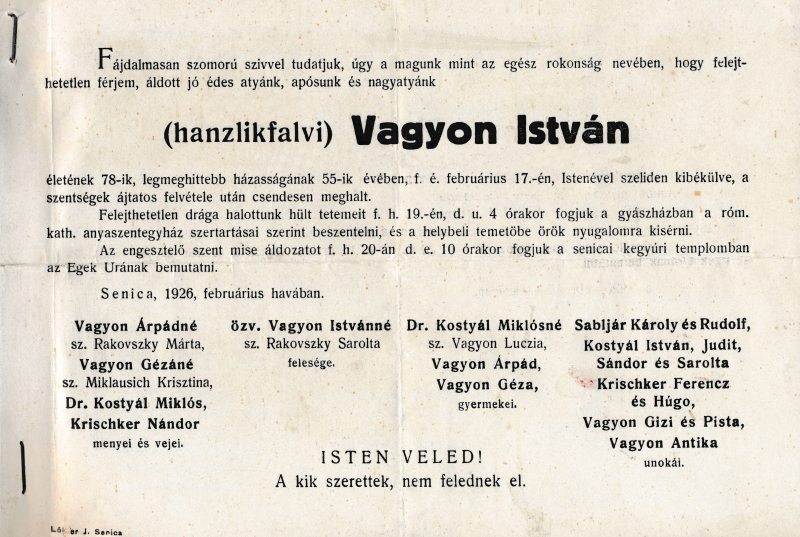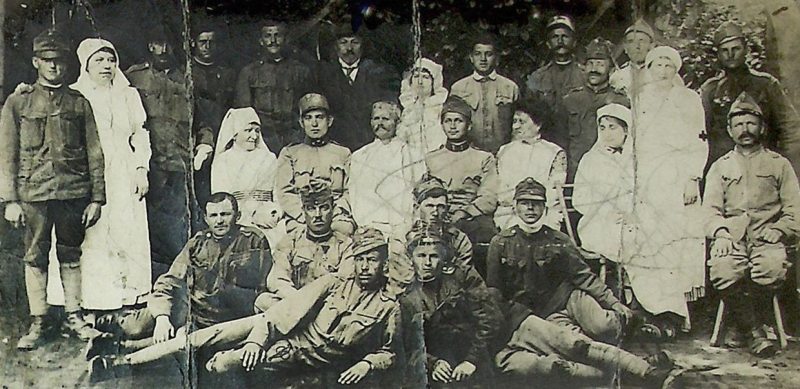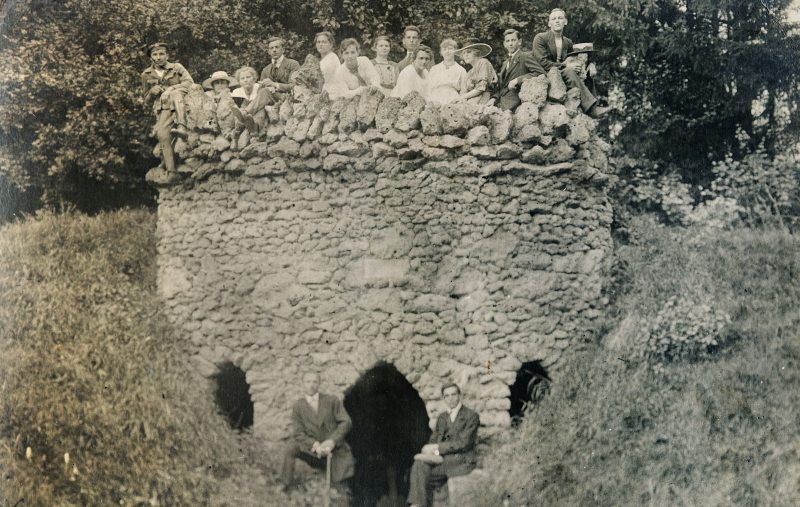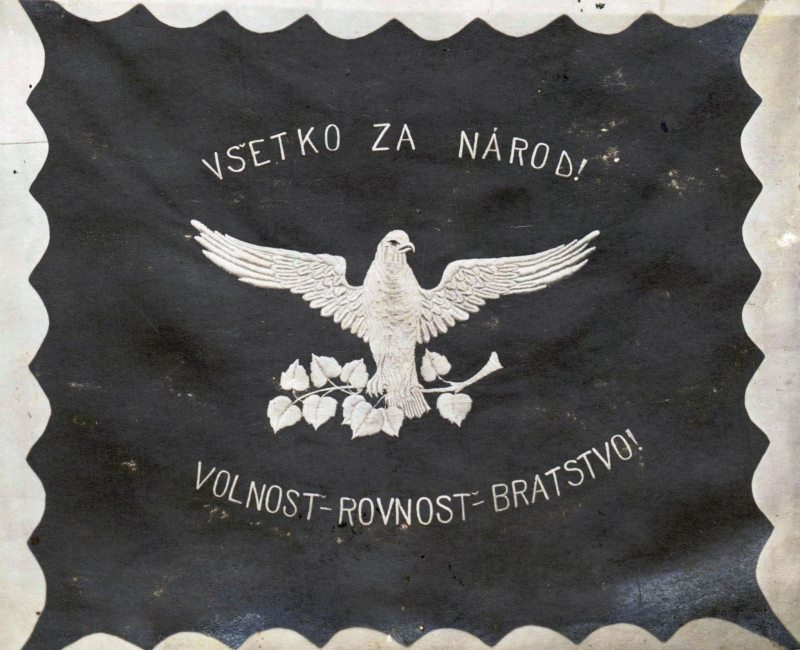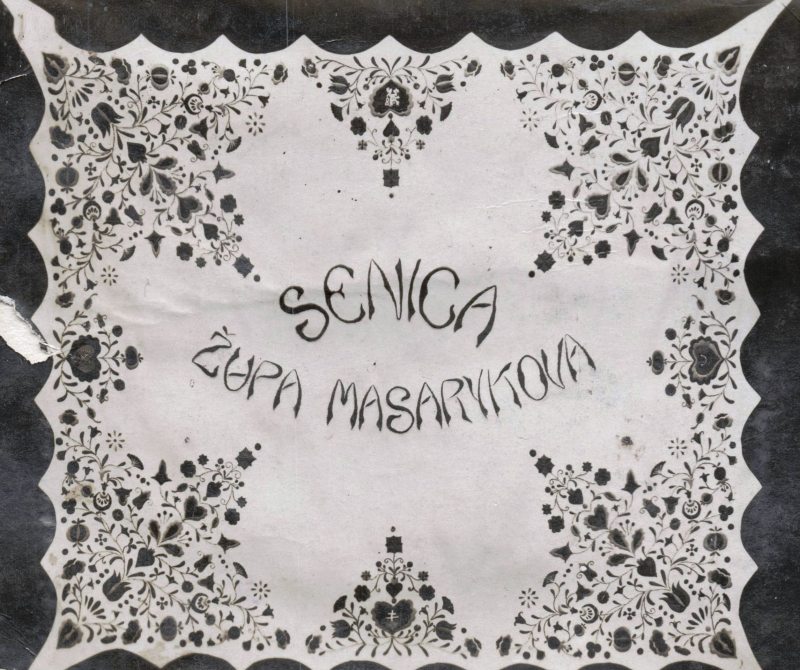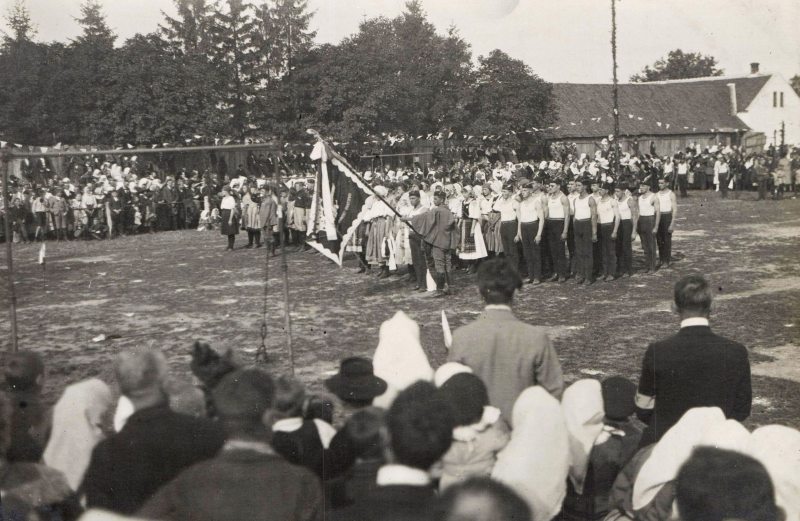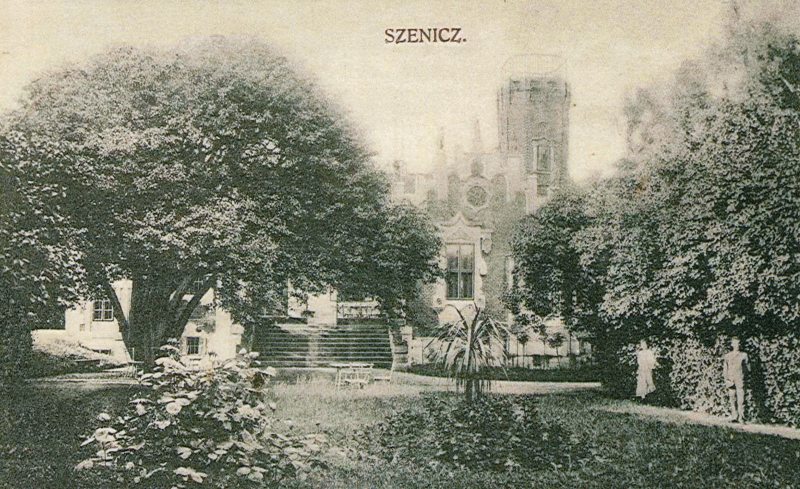Rod Vagyon Senická vetva
Uhorský zemiansky rod Vagyon pochádzal z Trenčianskej stolice, z obce Hanzlíková (Hanzlikfalva) v súčasnosti časť Trenčína. Príslušníci rodu Vagyon používali predikát de Hanzlikfalva.
Najstarší známy príslušník rodu Adam Vagyon, Pecho, sa v Hanzlíkovej spomína od roku 1544. Jeho potomok Juraj Vagyon je v roku 1590 uvedený v súpise trenčianskej šľachty. Viacerí členovia rodu sa uplatnili v stoličnej a mestskej správe. V rokoch 1751–60 zastával Michal Vagyon (1698–1769) post trenčianskeho senátora, Jozef (1740–1785) v roku 1780 bol tren- čianskym podslúžnym a Mikuláš (1806–1868) bol hlavným slúžnym Trenčianskej stolice. Mikulášov mladší brat Anton (1814–1850) bol zasa hlavným slúžnym v Nitrianskej stolici. Ich ďalší brat Štefan (1808–1871) si zvolil duchovnú dráhu a stal sa nitrianskym kanonikom.
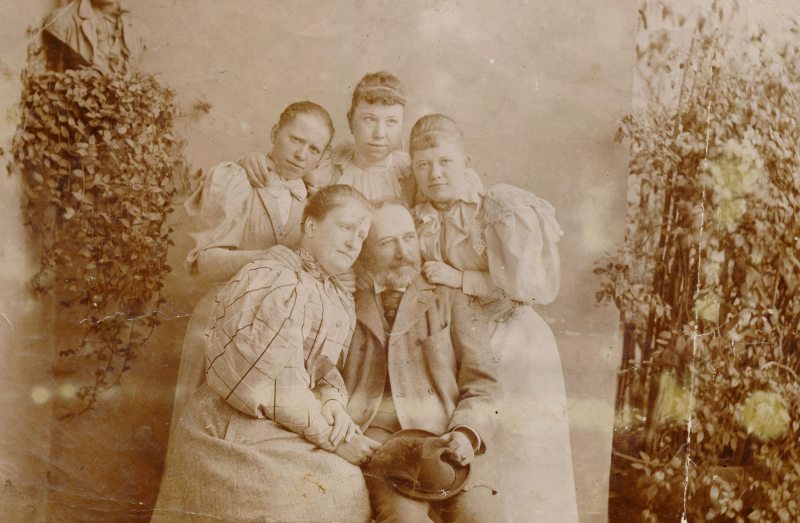
Na fotografii István Vagyon s manželkou Šaroltou a so svojimi troma dcérami Margitou (1873–1918), Lúciou (1874–1933) a Gabrielou (1875–1907). Chýbajú synovia Arpád (1876–1948) a Géza (1879–1932)
Vagyonovci mali svoju kúriu v Senici na Kunovskej ulici. Pôvodne to bol starší barokový palác, ktorý István Vagyon v prvej polovici 70. rokov 19. storočia prestaval. Kúria mala 16 izieb. Honosnejšou fasádou v neobarokovom štýle bola orientovaná smerom do dvora a parku. Uličná fasáda so secesnými rastlinnými motívmi bola naopak veľmi jednoduchá. Budova bola asanovaná v 70. rokoch minulého storočia pri novej výstavbe.
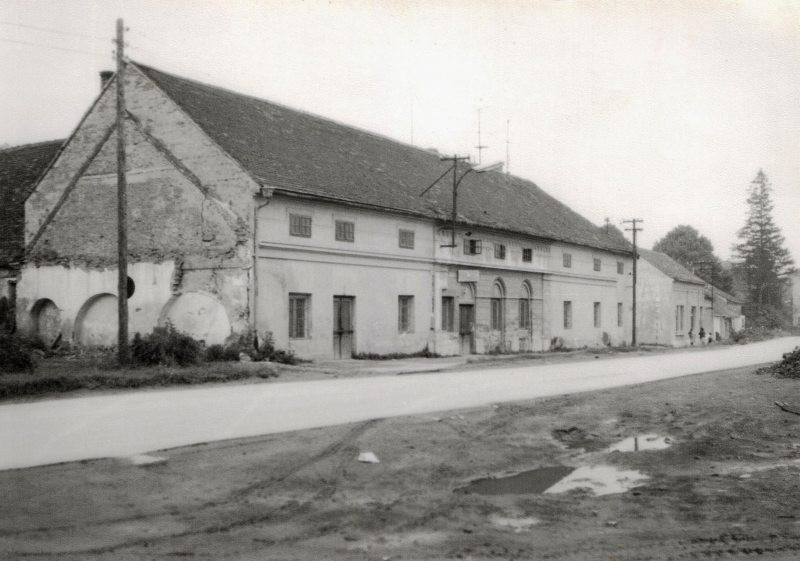
Vagyonovci do polovice 19. storočia žili predovšetkým v Hanzlíkovej, Trenčíne
a v Zemianskych Miticiach (dnes súčasť Trenčianskych Mitic). So Senicou sú Vagyonovci spätí od 40. rokov 19. storočia, keď sa Anton Vagyon ako hlavný slúžny Skalického okresu, súčasťou ktorého bol i Senický obvod, prisťahoval do Senice. Tu sa usadil v Kunovskej ulici (dnes Štefánikova ulica) v kaštieli po Nyariovcov. Ako hlavný slúžny sa podieľal v rokoch 1848/49 na potlačení slovenského povstania. V lete 1848 bol zvolený za Skalický okres do uhorského parlamentu. V Senici sa mu narodil jediný potomok, syn István (1848–1926). Pokrstil ho jeho brat-kanonik Štefan Vagyon. Anton zakrátko zomrel.

Volebné pierko Arpáda Vagyona z roku 1910 ako kandidáta za Senický volebný okres do uhorského parlamentu za liberálnu stranu Menzeti Munkápart. Pierko nosili jeho prívrženci. Protikandidátom za Slovenskú národnú stranu bol Dr. Milan Hodža. Vo voľbách zvíťazil A. Vagyon.
István sa v roku 1871 oženil so Šaroltou Rakovszkou. Z manželstva sa im narodili tri dcéry a dvaja synovia. István v Senici vybudoval ukážkový poľnohospodársky veľkostatok s využitím najmodernejších technológií. Hospodáril na 1200 uhorských siahach (cca. 518 ha), z toho 840 uhorských siah (cca. 362 ha) tvorila orná pôda. Na majeroch Horné a Dolné Suroviny choval okolo 150 ks hovädzieho dobytka (plemená bernské a simentálske) a vybudoval si vlastnú mliekareň. Vynikajúcu povesť mali ako chovateľ arabských koní a lipicanov (choval spolu okolo 80 kusov). Produkoval osivá ďateliny, lucerny a viky (ľadníka). Vo veľkom pestoval cukrovú repu. Pre jej pohodlnejšiu nakládku vybudoval na vlastné náklady železničnú vlečku s nakladacou rampou a váhou. K hospodárstvu patrilo 200 uhorských siah lesa (cca. 86 ha) na Surovinách a 2 uhorské siahy (cca. 86 a) viníc v Kunove. Okrem toho vlastnil dve tehelne (pri Horných Surovinách a na Kunovskej ulici) a veľkostatky vo výmere 1900 uhorských siah (cca. 820 ha) v Trenčianskej a Čanádskej stolici (dnes územie hraníc Rumunska a Maďarska).
Parte Istvána Vagyona. Zomrel v Senici 17. februára 1926 vo veku 78 rokov. Pohreb sa konal 19. februára o 16. hodine v Senici. Pochovaný bol na senickom cintoríne. V nasledujúci deň o 10. hodine boli v rímskokatolíckom kostole zádušné bohoslužby. Na parte sú uvedené mená manželky a detí s rodinami.
Ďalším pokračovateľom senickej vetvy bol Arpád Vagyon (1876–1948), ktorý
po zabsolvovaní gymnázia študoval v Bratislave a Budapešti právo. Po skončení štúdia pracoval na farme v Bábolnej neďaleko Komárna ako štátny hospodár. V roku 1898–99 slúžil ako dobrovoľník v 6. dragúnskom pluku. Po návrate do civilu v hodnosti náhradného nadporučíka rok pracoval ako župný úradník Nitrianskej župy. Potom spolu s otcom viedol v Senici hospodárstvo,. Vo voľbách v roku 1910 kandidoval za liberálnu stranu Menzeti Munkápart (Národná strana práce) a bol zvolený za poslanca parlamentu za Senický volebný okres. Jeho mladší brat Géza sa venoval v Budapešti herectvu.
Pri zrode Červeného kríža v Senici počas 1. svetovej vojny stála sestra Arpáda Vagyona Margit Sabljar. Zranených vojakov ošetrovali v budove „polgárky“ (uhorská kráľovská štátna meštianska škola) v Kunovskej ulici (dnes Štefánikova). Červený kríž, ktorý vznikol z iniciatívy okresného slúžneho Dr. Lájos Szalleho, ku koncu vojny zanikol. Členkami ČK boli príslušníčky pro-maďarsky orientovaných senických rodín. Jednou z ošetrovateliek bola i Márta Vagyon, manželka Arpáda Vagyona.
Ošetrovateľky (zľava doprava): Márgit Sabljar – predsedníčka Červeného kríža, Rozalia Meislová, manželka lekára Arpáda Grünfelda, manželka hlavného slúžneho Lájosa Szalleho, Márta Vagyonová a Irma Schlesingerová, v strede v bielom plášti sediaci lekár Dr. Arpád Grünfeld, v zadnom rade v civile Dr. Lájos Szalle
Po vzniku Československej republiky sa Arpád Vagyon stiahol z verejného života a plánoval odísť do Maďarska. Jeho otec István však s tým nesúhlasil. Svoj plán uskutočnil až po smrti otca. V roku 1929 sa s manželkou a dvoma dospelými deťmi vysťahoval neďaleko Rábu (Győr), kde žil v kaštieli v Bethlempuszta. V Senici všetok majetok rozpredal. Nerozparcelovanú časť veľkostatku predal Ing. Eugenovi Weiszovi. Kaštieľ s priľahlým parkom a les kúpil advokát Dr. Samuel Hajdu, majiteľ kúpeľov Smrdáky. Letohrádok predal v roku 1925 TJ Sokol Senica. Bírešom daroval služobné byty ako odstupné za ich službu na veľkostatku.
Pri odchode zo Senice mu mesto oficiálne poďakovalo za všetko, čo vykonal v jeho prospech. Podľa pamätníkov navštívil Arpádov syn István Senicu dva razy (1910 – cca. 1992). Najskôr v roku 1957 prišiel s dcérou, keď sa rušil starý cintorín a druhý raz so synom začiatkom 80. rokov minulého storočia.
1919–1938
Sokol a Sokolovňa
Počiatky vzniku a rozvoja organizovaného športu siahajú do 2. polovice 19. storočia.
V Čechách Dr. Miroslav Tyrš založil telovýchovnú jednotu Sokol, ktorá našla odozvu i na Slovensku. Ideou Sokola bola po vzore gréckej kalokagatie výchova zdravých, zdatných, čestných a činných ľudí.
Po vzniku Československej republiky sa zlepšili podmienky pre činnosť telovýchovných a športových jednôt. Prvá sokolská organizácia na Slovensku vznikla ešte koncom roka 1918 v Skalici. K popularizácii sokolskej myšlienky prispievali českí učitelia a úradníci pôsobiaci po roku 1918 na Slovensku. O zrod Sokola v roku 1919 sa v Senici zaslúžili bratia Dušan a Cyril Kresákovci, Dr. Ivan Horváth a z radov českých úradníkov Červinka (prednosta železničnej stanice), manželia Príbeskí (zamestnanci železnice) a Míček (úradník v továrni na umelé vlákna, neskorší zať M. M. Braxatorisa). K jeho aktívnym členom a dlhoročným funkcionárom Sokola patrili i MUDr. Ľudovít Šimko, ktorý sa stal starostom senického Sokola a náčelník spolku Samuel Mitáček. Náčelníčkou žien bola Amália Krištofová, neskôr Elena Novomeská. TJ Sokol Senica patrila do Masarykovej sokolskej župy, do trnavského (III.) okrsku a mala okolo 150 členov. Dňa 10. júna 1934 sa Senica stala miestom župného sokolského zletu, ktorého sa zúčastnilo dvetisíc ľudí, z toho vyše tisíc sokolov z Masarykovej župy a z Moravy.
Verejné cvičenia mávali sokoli na trhovisku (v súčasnosti okolie budovy Záhorskej knižnice), kde sa 18. septembra 1921 konalo i slávnostné odhalenie práporu TJ Sokol Senica. Čistý výťažok z podujatia v sume 14 000 Kč bol určený na stavbu sokolovne. Napokon sa situácia vyvinula tak, že od Arpáda Vagyona odkúpili v roku 1925 letohrádok za 220 000 Kč a ten adaptovali na sokolovňu. Dňa 11. septembra 1927 sa konalo slávnostné otvorenie sokolovne. Budova slúžila nielen na športové podujatia, ale bola i kultúrnym stánkom. Suterén sokolovne využívali cvičenci, na prízemí sa zriadila miestnosť na premietanie, urobilo sa aj javisko. Vo dvore postavili kolkáreň a priestranstvo pred budovou upravili na ihrisko. Cvičila
sa gymnastika, na ihrisku sa hrával volejbal, česká hádzaná, kolky. Cvičenci boli rozdelení do skupín podľa veku a pohlavia. Dva razy do týždňa bolo cvičenie povinné a v nedeľu dobrovoľné. Od roku 1933 sa ihrisko počas zimy využívalo ako klzisko. Sokolovňa bola dejiskom rôznych spoločenských a kultúrnych akcií, karnevalov, plesov a tanečných
zábav. Sokoli nacvičovali divadelné predstavenia a mali i vlastné bábkové divadlo. V sokolovni bola aj knižnica a jedno z dvoch prvorepublikových kín v Senici – kino Sokol. Premietalo sa v ňom každý týždeň v stredu a počas víkendu.
Súčasťou slávnosti rozhalenia práporu 18. IX. 1921 bolo i verejné cvičenie na senickom trhovisku. Ku cvičisku sa išlo sprievodom od meštianskej školy na Štefánikovej ulici. Na čele išli sokoli a krojovaní občania na koňoch. Cvičisko bolo upravené a vyzdobené zeleňou, kvetmi a zástavami v slovenských farbách. Cvičenia sa zúčastnilo 160 mužov a žien a 140 žiakov a žiačok.
Z prehľadu akcií, ktoré sa konali v závere existencie Sokola, si môžeme urobiť obraz o pestrosti podujatí. V marci 1937 to bola oslava k výročiu narodenia prezidenta T. G. Masaryka a v septembri pietna spomienka k jeho úmrtiu. V apríli 1937 bola uvedená divadelná hra Slamená vdova, pri príležitosti 10. výročia otvorenia sokolovne ochotníci predviedli divadelnú hru Náš jedináčik, v októbri 1937 operetu Madam, ja všetko platím. Viackrát v priebehu roka 1937 vystúpilo Komorné divadlo SND v Bratislave. Pod záštitou Okresného osvetového zboru v Senici sa uskutočnili v dňoch 8.–10. apríla 1937 divadelné závody a koncom septembra toho roku vystúpil Spevácky zbor slovenských učiteľov.
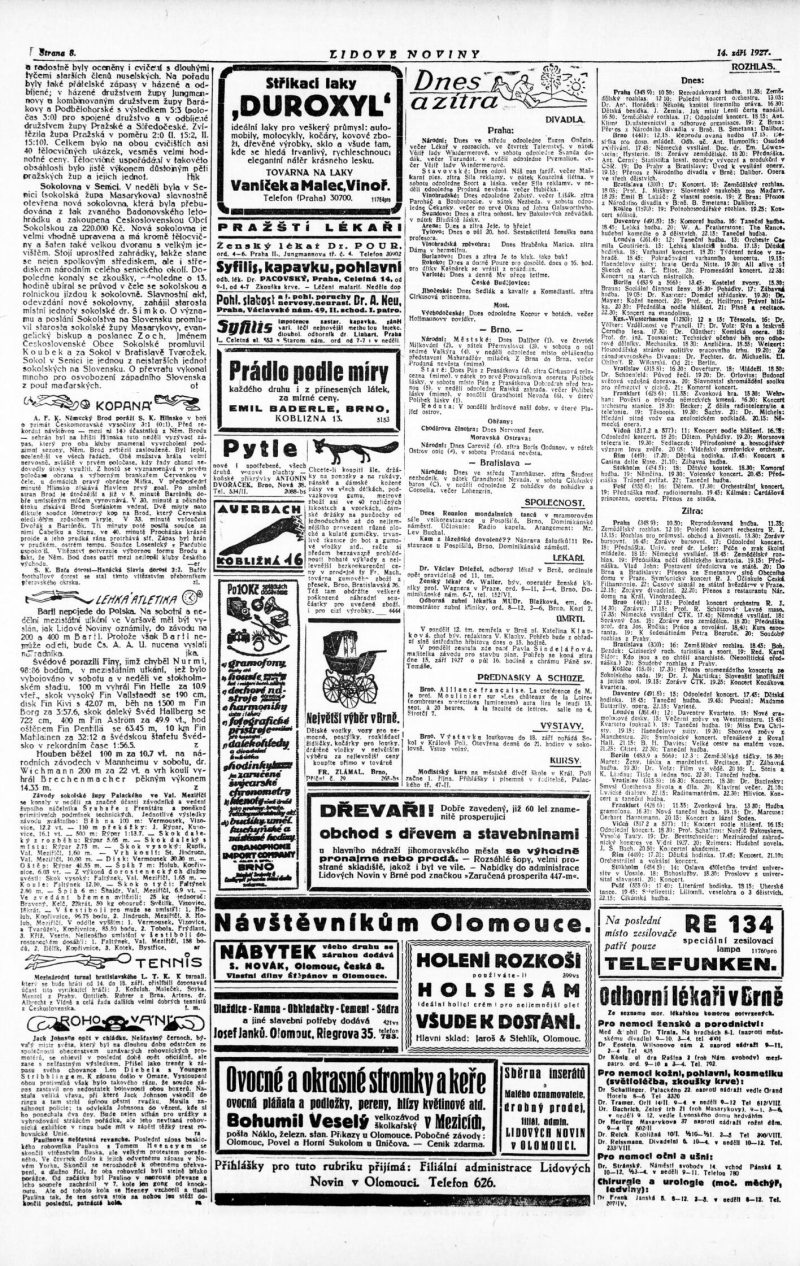
Správa o otvorení senickej Sokolovne – Lidové noviny 14. septembra 1927.
TJ Sokol Senica nebola jedinou športovou organizáciou v Senici počas medzivojnového obdobia. Krátko po jej založení v roku 1922 vznikla TJ Orol Senica. Na rozdiel od Sokola, ktorý bol orientovaný pročeskoslovensky a provládne, Orol mal bližšie k politike autonomizmu Slovenska a konfesijne bol prepojený s katolíkmi. Orol presadzoval kresťanské a národné ideály. Svoje centrum mal najskôr v sídle spolku Katolíckeho kruhu. Orol kúpil na Štefánikovej ulici starší dom, tzv. Staňácky dom, adaptoval ho na orlovňu. Kúpou sa však zadlžil a vykryť pohľadávkysa podarilo až s prispením nového katolíckeho farára Ferdinanda Mondoka a Sotinčanov, ktorí tvorili časť členskej základne Orla. Zadný trakt domu využíval Orol, v prednej časti si Michal Krutý otvoril hostinec. K dlhodobým funkcionárom senického Orla patrili Viliam a Žigmund Bílikovci, Štefan Mach, Štefan Závodský a farár Jozef Závodský.
Letohrádok v historizujúcom romantickom štýle s členitou severnou fasádou a vežičkou postavil István Vagyon začiatkom 80. rokov 19. storočia. Pozemok so staršou stavbou pravdepodobne z roku 1838 odkúpil od Michala Zsarnócsayho. Vstup do letohrádku bol z Kunovskej (teraz Štefánikovej) ulice cez park. Letohrádok pozostával zo 7 izieb, v suteréne bol 3-izbový byt domovníka, spoločná kuchyňa, miestnosti pre služobníctvo a iných 5 miestností.
Ďalšou telovýchovnou jednotou v Senici bola Robotnícka telocvičná jednota (RTJ) založená v roku 1923, ktorá združovala záujemcov predovšetkým z radov robotníkov. V nasledujúcom roku 1924 (niektoré pramene hovoria počas hospodárskej krízy) sa zlúčila so Sokolom. Miestom spoločných akcií RTJ bol hostinec u Tomšu na námestí a telocvičňa štátnej meštianskej školy. Cvičencov viedli Pavol Šipkovský a Mikuláš Tomeš. Židovská telovýchovná jednota vystupovala pod názvom Makkabi Senica. Jej existencia je doložená od roku 1926. Mala vyše 100 členov. Telovýchovné (telocvičné) jednoty združovali viacero športových disciplín alebo oddielov a ich náplň nebola len športová. V medzivojnovom období sa formovali predovšetkým na princípoch stavovskej a náboženskej príslušnosti. Okrem nich fungovali i športové kluby, ktoré sa zameriavali na niektorý druh športu. V roku 1921 vznikol v Senici futbalový klub pod názvom Železná únia z radov študentov. Jeho pokračovateľom sa stal Športový klub Senica, ktorý v roku 1933 dostal oficiálny názov FC Senica a prihlásil sa za člena Československej asociácie futbalu. V tomto období si futbalový klub založili i zamestnanci miestnej továrne na umelé vlákna. Pokračovanie predvojnovej tradície tenisu nastalo v roku 1925 založením Lawn tennis club Senica. Atletike sa venoval atletický klub, v roku 1928 premenovaný na AC Senica. V tomto istom roku sa stal aj členom Československej atletickej federácie.
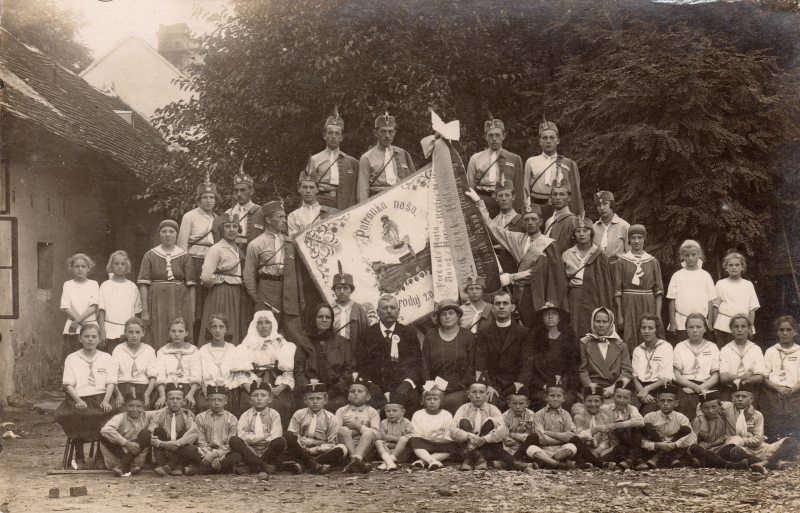
Posviacka orolskej zástavy v Senici 1. júl 1923
1938–2017
Sokol a Sokolovňa
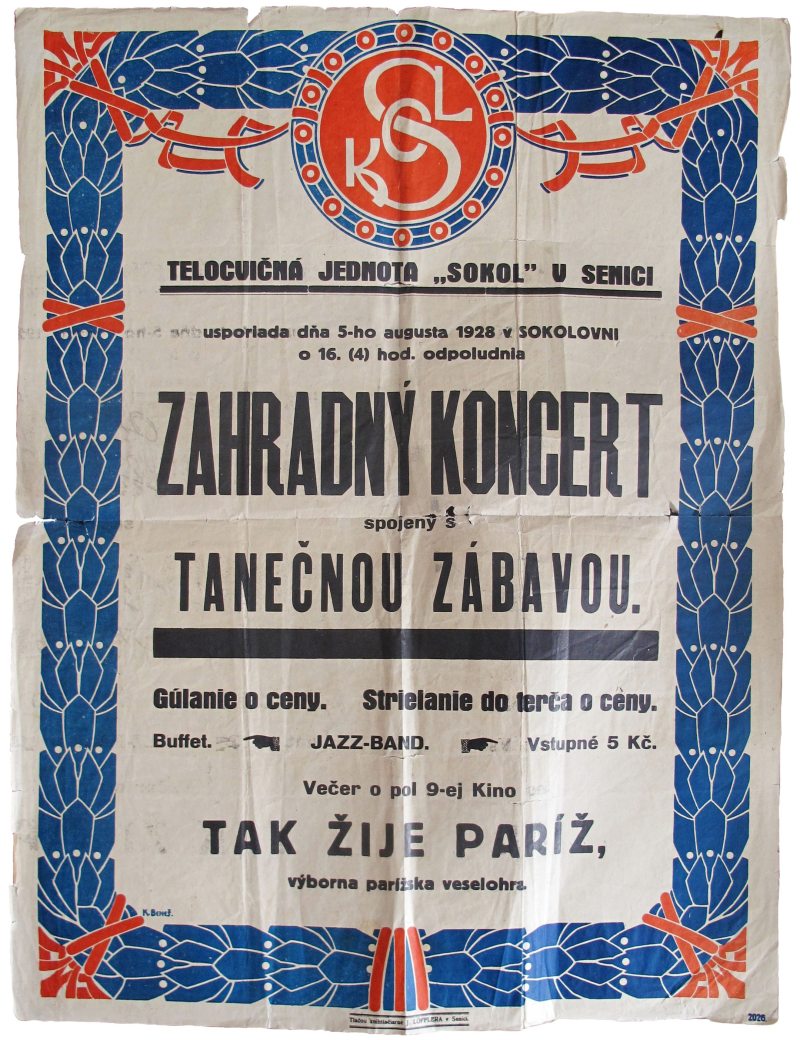
Plagát na koncert v Sokolovni z roku 1928
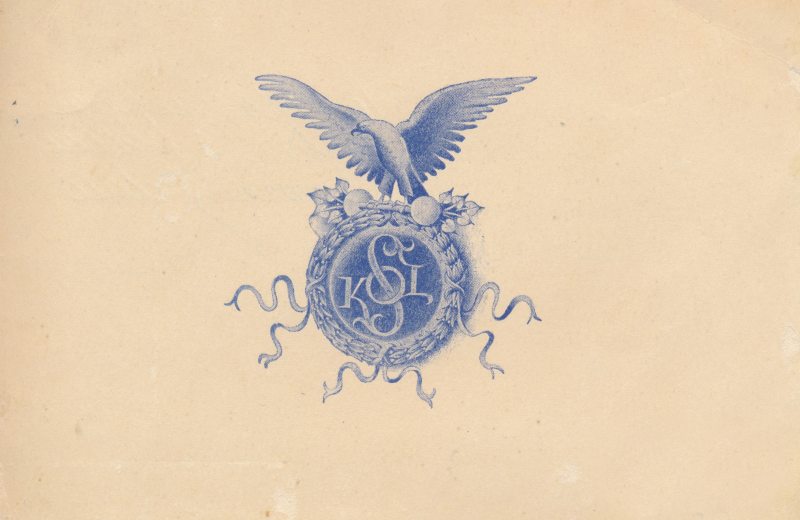
Pozvánka na sokolský maškarný ples z roku 1935
V roku 1945 obnovila TJ Sokol svoju činnosť vo viacerých sekciách a naspäť jej vrátili sokolovňu. Toto obdobie však trvalo len krátko do roku 1948, keď režim zlúčil všetky telovýchovné organizácie do jednej. TJ Sokol Senica zanikla a sokolovňu prevzal Okresný národný výbor (ONV) Senica. Pri Slovenskom hodvábe vznikla v roku 1948 Závodná sokolská jednota Slovenský hodváb, avšak už v ľudovodemokratickom duchu, ktorá sa zakrátko premenovala na TJ Iskra Senica. Pri vojenskom útvare vznikla v 50. rokoch 20. storočia TJ Dukla Senica. V roku 1954 po otvorení nového kultúrneho domu previedol ONV sokolovňu na TJ Iskra Senica. V roku 1958 sa TJ Iskra Senica premenovala na TJ Slovan Senica a ten sa v polovici 60. rokov minulého storočia zmenil na TJ Záhoran Senica. Združovala viaceré oddiely: futbalový, stolnotenisový, basketbalový, volejbalový a hádzanársky.
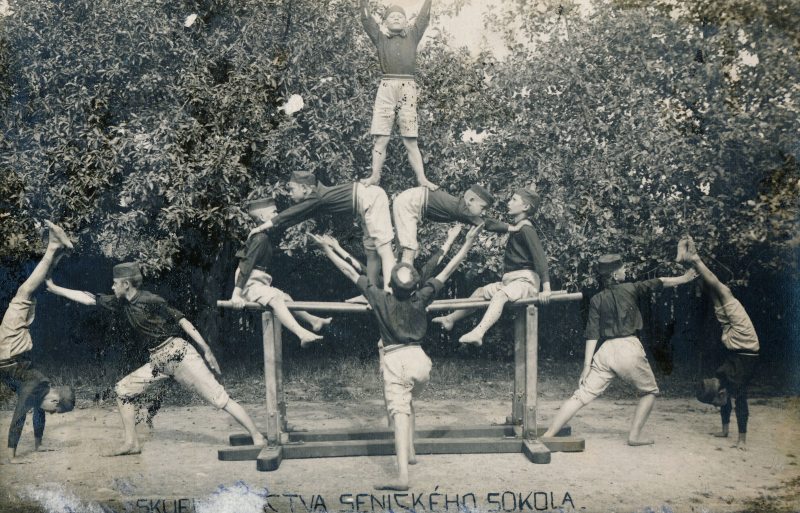
Senickí sokolskí dorastenci na okrskovom cvičení
Otvorením kultúrneho domu sa sokolovňa stala predovšetkým športovým stánkom, hoci i naďalej ju využívali viaceré organizácie. Sídlil tu Zväzarm, hudobná škola, istý čas v nej bola umiestnená knižnica, nacvičovala v nej závodná hudba pri ČSAD, pracoval tu okresný výbor Československého zväzu telesnej výchovy a provizórne v nej umiestnili dievčenský učňovský internát Slovenského hodvábu Senica. Popri tom v nej vyučovali viaceré senické školy hodiny telesnej výchovy. V zimných mesiacoch bola takmer nepretržite využitá od 8. hodiny až do neskorých večerných hodín. Situácia sa mierne zlepšila po otvorení športového štadióna v roku 1965. Dobudovaním školských telocviční a mestskej športovej haly v 80. rokoch minulého storočia význam sokolovne upadol.
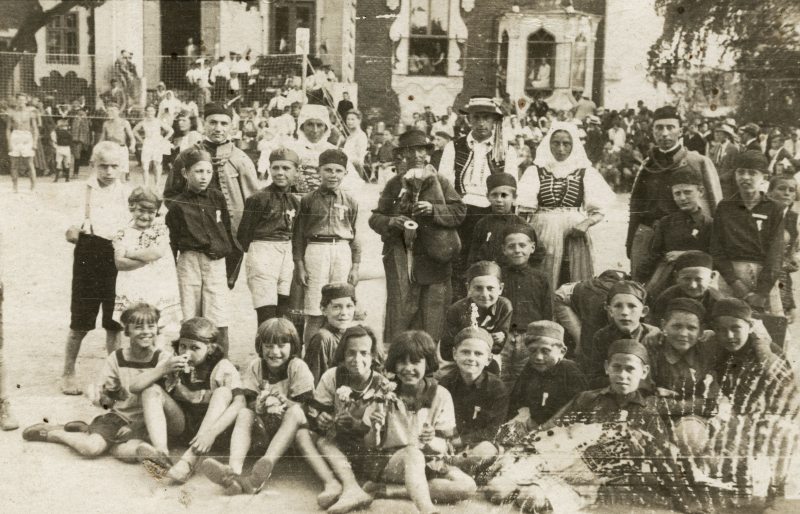
Sokolské slávnosti na dvore sokolovne 29. mája 1938
Do opravy sokolovne sa po vojne neinvestovalo prakticky až do polovice 60. rokov minulého storočia, keď Okresný stavebný podnik Senica vykonal generálnu opravu. Po vojne sa opätovne do budovy nasťahoval ako domovník Ján Provazník s manželkou. Jeho úlohou bolo upratovanie sokolovne a kúrenie a túto prácu vykonával až do polovice roku 1960.
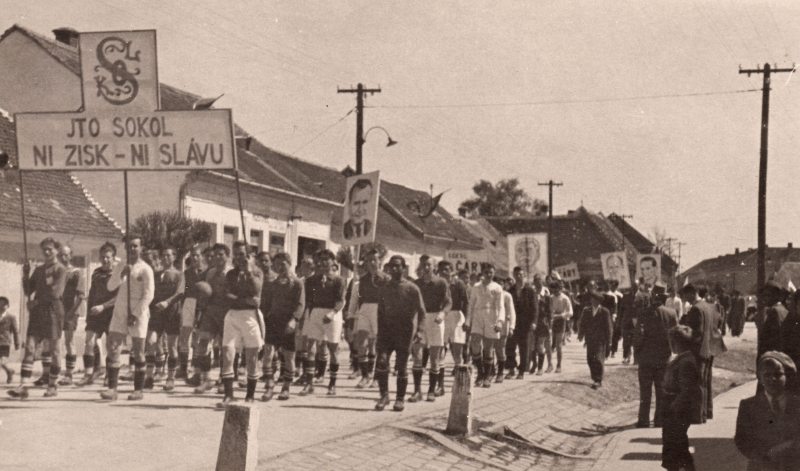
Senickí sokoli ako účastníci prvomájového sprievodu rok 1948?
Z Kroniky mesta sa dozvedáme, že od 70. rokov minulého storočia športové aktivity v Senici zastrešovali viaceré telovýchovné jednoty. Najpočetnejšiu členskú základňu mala TJ Slovenský hodváb Senica so 6 oddielmi (futbal, tenis, volejbal, hokej, šach a turistika) s vyše 600 členmi. O polovicu menšia bola TJ Záhoran Senica s oddielmi hádzaná, stolný tenis, karate, kulturistika a turistika. Špeciálne na pestovanie a rozvoj masovej turistiky bola orientovaná TJ Turista Senica s takmer 350 členmi. Pri vojenskom útvare v lete 1979 vznikla TJ Šport s futbalovým a turistickým oddielom. Koncom roka 1980 bola založená TJ Červená hviezda Senica, ktorá združovala príslušníkov Zboru národnej bezpečnosti vo futbalovom a streleckom oddiele. Posledným senickým športovým klubom bola TJ Okresný stavebný podnik Senica s oddielmi kulturistika, cyklistika a turistika. Sokolovňa po roku 1989 slúžila športovým účelom TJ Záhoran Senica.
V roku 2017 ju odkúpilo Mesto Senica.


